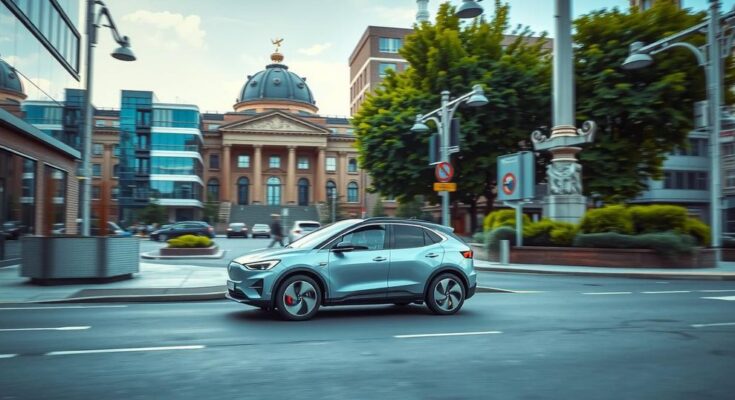A unique test ride through Berlin introduced me to a remote-controlled EV, where Bartek Szurgot, a software engineer from Vay, worked from an office, steering the vehicle via a high-tech setup. As the Kia Niro EV drove through the bustling streets, I marveled at the surreal experience of having a driver miles away, controlling the car with finesse through interlinked cameras and audio cues.
Vay employs a sophisticated “drive-by-wire” system allowing seamless communication between the remote operator and the vehicle’s controls. This arrangement ensures that real-time commands are translated into actions, keeping the car responsive while maintaining safety through redundant networks that halt the vehicle if issues arise.
Currently, Vay drivers primarily deliver vehicles to customers who hail them via an app. Once they reach their destination, users take the wheel and drive, later parking the car for the next operator to commandeer. Although the setup was initially disconcerting, the ride felt almost mundane, demonstrating the technology’s effectiveness.
However, the legal landscape in Europe poses significant challenges for Vay. With only limited test drives permitted and safety drivers required in cars, progress has been slow. While Vay showcases innovation in Las Vegas, the European scene lacks commercial service, hindered by strict regulations and slow legislative responses.
I had hesitations when first learning about Vay’s model, but Vay’s CEO, Thomas von der Ohe, shared insights that reshaped my view. Their distinctive approach fosters a new category of mobility, focusing on car sharing rather than the ride-hailing norm, and offering competitive pricing by allowing one driver to oversee multiple vehicles.
Vay offers an alternative to traditional car rentals, eliminating the hassle of pickups and parking while optimising vehicle usage. With significant funding backing their vision, Vay’s model aims to transform urban transport. Still, obstacles remain in rolling it out across Europe where regulations continue to stifle innovation.
Despite the challenges, Vay’s progress in Las Vegas is encouraging, with plans to expand the fleet and enhance infrastructure. My recent ride left me intrigued about the future of urban transport; I glimpsed a reality where empty cars await their next drivers—a possibility lurking on the horizon, yet currently locked within regulatory constraints. My journey exemplifies the potential of Vay’s model, and the longing for a technologically empowered future is strong, though for now, one would need to venture to Vegas to witness it firsthand.
During a recent test ride in Berlin, I explored Vay’s remote-controlled EV driven by an operator from km away using advanced tech. Vay focuses on transforming car sharing by minimising driver costs and enhancing convenience for customers. While the model excels in Las Vegas, regulatory hurdles in Europe hamper its rollout, leaving a promising future uncertain.
In a world racing towards innovative transport solutions, Vay’s remote EV drive represents a promising shift in mobility. The model focuses on efficiency and cost-effectiveness in car sharing, albeit facing significant regulatory hurdles in Europe that may hamper its growth. With successful operations in Las Vegas, Vay aims to bridge the gap between technology and traditional car usage, setting a new precedent for urban transport.
Original Source: thenextweb.com



